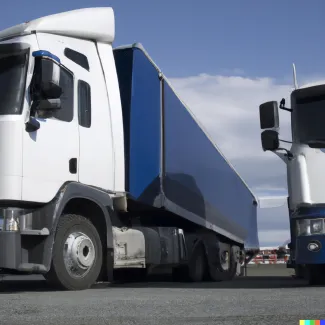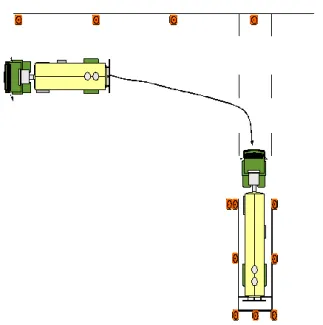If you're in the market for a powerful and dependable heavy-duty truck, you've come to the right place! Whether you're looking for a truck for construction, long-haul transportation, or any other demanding task, this list of top US websites will help guide you to the perfect vehicle. Heavy-duty trucks play a crucial role in various industries, and finding the right one can be a game-changer for your business or personal needs.
CDL
Common Causes of Road Accidents
- Read more about Common Causes of Road Accidents
- Log in or register to post comments
Accidents on roads can be caused by a wide variety of factors, including distracted driving, impaired driving, speeding, poor weather conditions, fatigue, incorrect lane changes or turns, vehicle malfunction, poor road conditions, poor lighting, aggressive driving, inexperience, and insufficient training. These factors can contribute to the risk of an accident occurring, and it's important for drivers to be aware of them in order to reduce the risk of an accident happening.
Types and Prices of Different Trailer Options
- Read more about Types and Prices of Different Trailer Options
- Log in or register to post comments
There are a variety of different trailer types that are designed for specific purposes, such as transporting non-perishable goods, animals, refrigerated items, vehicles, and materials. The cost of a trailer can vary greatly depending on its size, features, and condition. Some common types of trailers include dry van trailers, flatbed trailers, livestock trailers, refrigerated trailers, utility trailers, car trailers, and dump trailers.
Understanding the Trucking Industry: Key Terms and Concepts
The trucking industry is the backbone of global commerce, responsible for transporting goods and materials across vast distances. From delivering everyday essentials to moving specialized cargo, trucking plays a vital role in keeping the world's supply chains running smoothly. However, the industry comes with its own unique language—terms and jargon that describe vehicles, cargo, regulations, and operations.
Cost of Owning a Cargo Trailer: Buying and Maintenance Expenses
The cost of a cargo trailer depends on various factors such as size, material, and features. On average, a basic cargo trailer can cost anywhere from $1,500 to $5,000. However, more advanced trailers with additional features such as a built-in ramp or higher quality materials can cost upwards of $10,000.
As for maintenance costs, it is difficult to provide an exact amount as it depends on the frequency of use and the condition of the trailer. However, some common maintenance expenses include:
The Road to Excellence: How to Become a Good Truck Driver
Becoming an exceptional truck driver is about much more than just operating a large vehicle. It's a profession that demands responsibility, skill, and dedication. Professional truck drivers form the backbone of the supply chain, delivering essential goods across cities, states, and countries. The difference between an average driver and a good truck driver lies in their commitment to safety, professionalism, and continuous improvement.
Fuel Consumption Estimates for Heavy Duty Truck
- Read more about Fuel Consumption Estimates for Heavy Duty Truck
- Log in or register to post comments
Heavy duty trucks are an essential part of our transportation infrastructure, playing a vital role in the movement of goods and materials across the country. These vehicles are designed to handle heavy loads and travel long distances, making them an important tool for businesses in a wide range of industries. However, the fuel consumption of heavy duty trucks can be a significant concern, as these vehicles are known to consume large amounts of fuel in order to power their engines and perform their duties.
Why Truck Drivers slid the Tandem Axles and The fifth wheel?
There are things that you did not learn in CDL driving school because the premier goal of the school is to get your CDL license, But the tricks and secrets of driving a truck trailer professionally you will learn them later when you actually start driving a truck trailer. Here is a group of tricks you will need in your working life as a truck trailer driver.
Moving Tandem Axle to Adjust The Weight Distribution
The total weight of the truck and trailer should be not more than 80K pounds, and must be distributed along the length of the truck as follows
The Importance of Checking the Testes in CDL Medical Exams
When it comes to obtaining a commercial driver's license (CDL), one of the key requirements is passing a medical exam. During this exam, a doctor will perform a variety of tests and assessments to ensure that the applicant is physically fit to operate a commercial vehicle. One area of the body that may receive special attention during a CDL medical exam is the testes. In this article, we will discuss the reasons why a CDL medical card doctor may check the testes and the importance of this examination in maintaining overall male reproductive health and safety on the road.
How to Complete the Alley Dock Maneuver for a Truck Trailer
There is no specific plan or method to follow rigidly for completing the Alley Dock maneuver. The key is to closely watch the reference cone and the rear of your trailer. The reference cone is the first left cone on the driver's side. Keep an eye on this cone to guide your maneuver.
Pushing the Trailer Toward the Reference Cone
To push the trailer in the direction of the reference cone, turn the steering wheel to the right. This action will make the trailer move quickly toward the cone. However, be careful not to allow the trailer to move past the cone.


